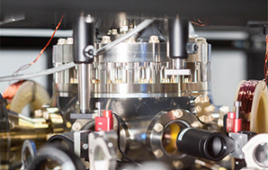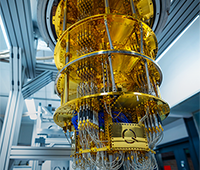 A research group at the Center for Earth Information Science and Technology, the Japan Agency for Marine-Earth Science and Technology (JAMSTEC), presented high-performance simulations of global seismic wave propagation on the K computer1 with an unprecedented accuracy of 1.2 seconds seismic period for a realistic three-dimensional Earth model.
A research group at the Center for Earth Information Science and Technology, the Japan Agency for Marine-Earth Science and Technology (JAMSTEC), presented high-performance simulations of global seismic wave propagation on the K computer1 with an unprecedented accuracy of 1.2 seconds seismic period for a realistic three-dimensional Earth model.
Achieved using the Spectral-Element Method (SEM),2 the result demonstrated that global seismic wave propagation with a precision of one second is possible for realistic three-dimensional (3-D) Earth models. It should help researchers to understand earthquake occurrence mechanisms and the Earth’s internal structures more precisely, and is expected to make significant contributions to disaster prevention and mitigation.
JAMSTEC has been aiming to obtain the most accurate structure of the Earth’s interior for improvement of earthquake simulations. The effort is part of the HPIC Strategic Programs for Innovative Research Field 3,3 in which JAMSTEC is acting as a strategic organization.
To achieve this goal, performing theoretical simulations of global seismic wave propagation excited by earthquakes is essential. Since the Earth is not a perfect sphere, however, analytical method can’t be applied. Instead, it is more common to use numerical methods for simulations of theoretical seismograms. In 2003, the study group achieved the computed theoretical seismograms with record-breaking five-second frequency for a realistic three-dimensional Earth with the Earth Simulator. To simulate seismic wave propagation for a three-dimensional Earth model, P and S waves known as “body waves” still need to run faster at a period of one second. By obtaining seismograms with an accuracy of 1.2 seconds for the entire group, it marked a significant step for better understanding of mechanisms of devastating earthquakes.
Led by Dr. Seiji Tsuboi, this project was carried out as part of Project 1, “Improvement of earthquake prediction accuracy” (Managing Director: Professor Takashi Furumura, The University of Tokyo) in HPIC Strategic Programs for Innovative Research Field 3, “Advanced Prediction Researches for Natural Disaster Prevention and Reduction” (hp140221) by the Ministry of Education, Culture, Sports, Science and Technology. The above results were published on the International Journal of High Performance Computing Applications on February 28, 2016 (JST).
Citation: A 1.8 trillion degrees-of-freedom, 1.24 petaflops global seismic wave simulation on the K computer. Authors: Seiji Tsuboi1, Kazuto Ando1, Takayuki Miyoshi1, Daniel Peter2, Dimitri Komatitsch3 and Jeroen Tromp4
- JAMSTEC
- King Abdullah University of Science & Technology (KAUST), Extreme Computing Research Center, Kingdom of Saudi Arabia
- Aix-Marseille University, France
- Princeton University, USA
References
- K computer: Named for the Japanese word “kei,” it is the first machine to achieve 10 quadrillion operations a second. It was jointly developed by RIKEN and Fujitsu as a core system for the “construction of innovative high-performance computing infrastructure (HPCI)” program by the Ministry of Education, Culture, Sports, Science and Technology. In September 2012, the joint operation was started.
- Spectral-Element Method (SEM): The SEM is an optimized high-order version of the finite-element method that is highly accurate for linear hyperbolic problems such as wave propagation. In addition, its mass matrix is perfectly diagonal by construction, which makes it favorable to implement on parallel systems because no linear system needs to be inverted.
- HPCI Strategic Programs for Innovative Research: Advanced Prediction Researches for Natural Disaster Prevention and Reduction (Field 3): The project’s strategic goals are “to globally project tropical cyclone trends in simulated global warming, demonstrate prediction of local heavy rain falls, establish the foundation for next-generation earthquake hazard maps and improve tsunami warning accuracy.”



